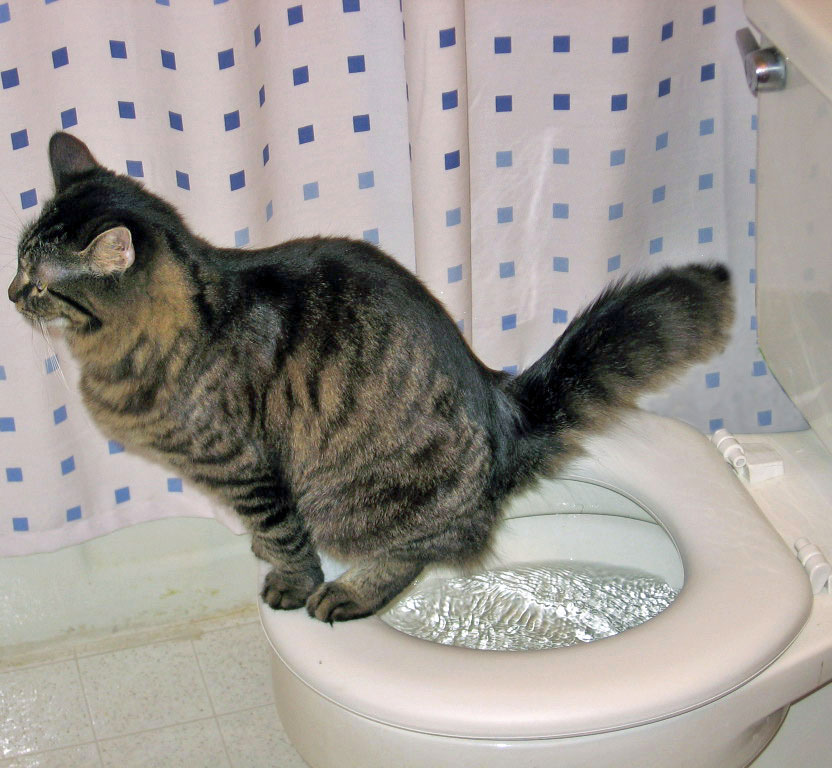Prevent Clogs and Damage: Never Flush Cat Poop Down Your Toilet - Professional Insights
Prevent Clogs and Damage: Never Flush Cat Poop Down Your Toilet - Professional Insights
Blog Article
Were you searching for facts and techniques on How to Dispose of Cat Poop and Litter Without Plastic Bags?

Intro
As pet cat proprietors, it's necessary to be mindful of exactly how we dispose of our feline pals' waste. While it may seem convenient to flush cat poop down the toilet, this practice can have harmful repercussions for both the atmosphere and human health.
Alternatives to Flushing
Thankfully, there are safer and more liable means to take care of feline poop. Consider the adhering to options:
1. Scoop and Dispose in Trash
One of the most typical approach of throwing away cat poop is to scoop it right into a biodegradable bag and throw it in the garbage. Make certain to utilize a committed litter scoop and take care of the waste quickly.
2. Usage Biodegradable Litter
Go with biodegradable feline clutter made from products such as corn or wheat. These litters are environmentally friendly and can be securely gotten rid of in the garbage.
3. Hide in the Yard
If you have a backyard, consider burying cat waste in an assigned area far from vegetable yards and water resources. Make certain to dig deep adequate to stop contamination of groundwater.
4. Set Up a Pet Waste Disposal System
Purchase an animal waste disposal system particularly designed for pet cat waste. These systems utilize enzymes to break down the waste, decreasing odor and environmental effect.
Wellness Risks
In addition to ecological problems, purging feline waste can also posture health and wellness dangers to humans. Pet cat feces may contain Toxoplasma gondii, a bloodsucker that can trigger toxoplasmosis-- a potentially serious disease, specifically for expecting women and individuals with damaged immune systems.
Ecological Impact
Purging feline poop presents dangerous pathogens and parasites right into the supply of water, posturing a substantial risk to water ecosystems. These pollutants can adversely affect aquatic life and concession water top quality.
Conclusion
Responsible animal ownership prolongs past supplying food and sanctuary-- it additionally involves proper waste management. By refraining from flushing feline poop down the bathroom and selecting different disposal approaches, we can decrease our ecological footprint and safeguard human health and wellness.
Why Can’t I Flush Cat Poop?
It Spreads a Parasite
Cats are frequently infected with a parasite called toxoplasma gondii. The parasite causes an infection called toxoplasmosis. It is usually harmless to cats. The parasite only uses cat poop as a host for its eggs. Otherwise, the cat’s immune system usually keeps the infection at low enough levels to maintain its own health. But it does not stop the develop of eggs. These eggs are tiny and surprisingly tough. They may survive for a year before they begin to grow. But that’s the problem.
Our wastewater system is not designed to deal with toxoplasmosis eggs. Instead, most eggs will flush from your toilet into sewers and wastewater management plants. After the sewage is treated for many other harmful things in it, it is typically released into local rivers, lakes, or oceans. Here, the toxoplasmosis eggs can find new hosts, including starfish, crabs, otters, and many other wildlife. For many, this is a significant risk to their health. Toxoplasmosis can also end up infecting water sources that are important for agriculture, which means our deer, pigs, and sheep can get infected too.
Is There Risk to Humans?
There can be a risk to human life from flushing cat poop down the toilet. If you do so, the parasites from your cat’s poop can end up in shellfish, game animals, or livestock. If this meat is then served raw or undercooked, the people who eat it can get sick.
In fact, according to the CDC, 40 million people in the United States are infected with toxoplasma gondii. They get it from exposure to infected seafood, or from some kind of cat poop contamination, like drinking from a stream that is contaminated or touching anything that has come into contact with cat poop. That includes just cleaning a cat litter box.
Most people who get infected with these parasites will not develop any symptoms. However, for pregnant women or for those with compromised immune systems, the parasite can cause severe health problems.
How to Handle Cat Poop
The best way to handle cat poop is actually to clean the box more often. The eggs that the parasite sheds will not become active until one to five days after the cat poops. That means that if you clean daily, you’re much less likely to come into direct contact with infectious eggs.
That said, always dispose of cat poop in the garbage and not down the toilet. Wash your hands before and after you clean the litter box, and bring the bag of poop right outside to your garbage bins.
https://trenchlesssolutionsusa.com/why-cant-i-flush-cat-poop/

I am very fascinated with How to Dispose of Cat Poop and Litter Without Plastic Bags and I'm hoping you liked the article. Do you know about another person who is intrigued by the topic? Take a moment to promote it. Thank you for taking the time to read it.
Request Estimate Report this page